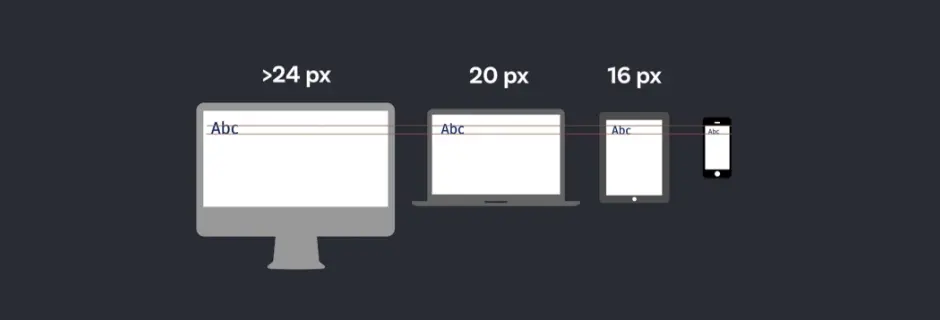Whitespace, often referred to as negative space, is not merely the absence of content; rather, it is a deliberate and thoughtful design choice that plays a crucial role in shaping the user experience. This unassuming canvas of emptiness, carefully integrated into the layout, holds the potential to enhance not only the aesthetic appeal but also the functionality and overall effectiveness of a website.
Contrary to its name, whitespace isn’t confined to a lack of color or barren expanses on a webpage. It is the breathing room between images, text, and other design elements that allows users to navigate seamlessly and engage with content effortlessly. While its impact on aesthetics is evident, the question often arises: does whitespace influence the elusive realm of Search Engine Optimization (SEO)? While whitespace itself is not a direct SEO factor, its intricate dance with user experience can indirectly shape a website’s performance in the digital arena.
Join us on a journey through the whitespace continuum, as we explore its role in crafting visually appealing, user-friendly websites, and uncover how this seemingly empty space contributes to the ever-evolving landscape of web design and user satisfaction.
Why does white space in web design matter?
Whitespace’s impact extends to user interaction and conversion. By strategically placing whitespace around call-to-action buttons and important elements, designers can make them stand out, prompting users to engage more effectively. This emphasis on key elements contributes to a positive user journey and increases the likelihood of desired actions, such as filling out a form or making a purchase.
Additionally, the elegance derived from well-utilized whitespace contributes to brand perception. A clean, organized design not only reflects positively on the brand but also communicates a sense of professionalism and attention to detail. Users are more likely to trust and engage with a website that provides a visually appealing and coherent experience. Beyond aesthetics, the strategic implementation of whitespace plays a practical role in optimizing page loading times, ensuring that a website not only looks good but performs efficiently.
The Psychology Behind White Space
The psychology behind whitespace in design delves into fundamental cognitive principles, shaping how individuals perceive and interact with visual information. Whitespace serves as a cognitive load reducer, offering a mental pause that prevents information overload and allows users to focus on essential content. Through the establishment of visual hierarchy, whitespace guides users intuitively, prioritizing key messages and facilitating navigation. Beyond functionality, the strategic use of whitespace triggers emotional responses, creating a sense of simplicity and elegance that positively influences brand perception. This clean, uncluttered layout not only aids in reading comprehension but also enhances user engagement by making interfaces more intuitive and encouraging exploration.
Moreover, whitespace directs attention and frames specific elements, ensuring that users don’t miss crucial information. In essence, understanding the psychology behind whitespace empowers designers to create visually appealing, user-friendly designs that resonate with users on a subconscious level, ultimately enhancing the overall user experience. By leveraging the psychological impact of whitespace, designers can craft interfaces that communicate messages effectively, evoke desired emotional responses, and contribute to a positive and memorable user journey.
Embracing Minimalism in Web Design
In the dynamic world of web design, the philosophy of minimalism has gained prominence as a guiding principle, fostering a design ethos that prioritizes simplicity, elegance, and the deliberate use of white space. Minimalist web design transcends mere aesthetics; it’s a strategic choice to declutter the digital canvas and create an immersive user experience.
At its essence, minimalism is about more than just reducing visual elements; it’s a thoughtful curation of design elements, allowing each component to breathe within the whitespace. The intentional use of white space, or negative space, is a hallmark of minimalist design. This strategic placement of emptiness serves not as an absence but as a powerful presence, framing content and guiding users through a purposeful visual journey.
Whitespace in minimalist design is not a void to be filled but a canvas upon which the essentials are highlighted. It provides users with a visual respite, reducing cognitive load and allowing for enhanced focus on the key elements of the website. By embracing the concept of white space, designers create layouts that feel open, uncluttered, and inherently user-friendly.
A minimalist approach to white space is not merely an aesthetic choice but a functional one. It ensures that users can navigate seamlessly, emphasizing content without overwhelming distractions. This intentional blank canvas contributes to a sense of balance, elegance, and sophistication—attributes that resonate particularly well with modern audiences seeking clarity in a digital landscape marked by information saturation.
However, achieving the delicate balance of minimalism requires a keen understanding of the interplay between elements and white space. Designers must strike a harmonious chord, allowing whitespace to enhance the overall user experience rather than being a mere backdrop. Successful minimalist designs seamlessly weave together form and function, leveraging white space to create a serene and engaging digital environment.
In an era where user attention is a precious commodity, embracing minimalism in web design, with a keen consideration for white space, becomes not just an aesthetic choice but a strategic decision. It’s a journey toward creating websites that captivate users with their simplicity, guide them with purposeful design, and leave a lasting impression in a world saturated with visual noise.
White Space and SEO: A Symbiotic Relationship
In the intricate realm of web design and SEO, the strategic utilization of white space emerges as a crucial but often understated factor that can significantly impact a website’s overall performance. While white space itself is not a direct contributor to SEO rankings, its influence on user experience can be a game-changer.
Well-designed white space contributes to a clean, uncluttered layout, fostering user engagement and encouraging visitors to linger on a site. This extended dwell time, indicative of positive user experiences, may be interpreted by search engines as a signal of content relevance and value. Furthermore, the reduction of visual clutter through white space can lead to lower bounce rates, signaling to search engines that users find the content compelling and are more likely to explore further.
In the mobile-centric landscape, the role of white space becomes even more pronounced. Beyond contributing to a responsive and mobile-friendly design, whitespace aids in improving readability, making content more digestible for users on various devices. Mobile-friendly websites are favored by search engines, influencing SEO rankings. The efficiency and elegance provided by white space also extend to faster page loading times, contributing to a positive user experience and aligning with search engine preferences for well-performing sites.
While the connection between white space and SEO is indirect, the nuanced impact of whitespace on user engagement, mobile responsiveness, and overall website efficiency underscores its importance in the broader context of SEO strategy. Designers and SEO professionals should collaboratively leverage the power of white space to not only enhance user experience but also contribute to the subtle yet influential elements that can positively shape a website’s search engine performance.
Conclusion
As we conclude this exploration, remember that white space is not a void to be filled but a canvas to be strategically utilized. Whether you’re a seasoned designer or a novice, embracing the whitespace can transform your digital presence. It’s the artful mastery of breathing space that elevates your website, captivates your audience, and ensures a lasting impression in the vast digital landscape. Embrace the white space advantage and let your design breathe life into the digital realm.
Transform Your Digital Space
Experience the impact of strategic design. Our expert team crafts visually stunning websites that prioritize user experience and brand identity. Ready to elevate your online presence?






